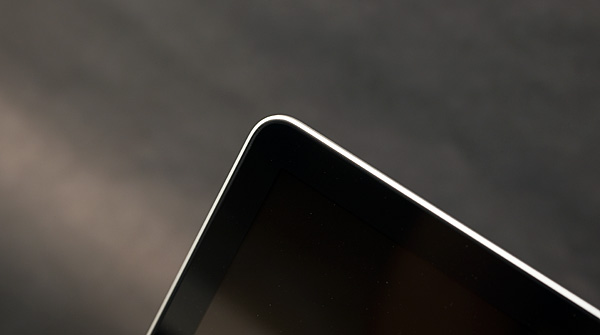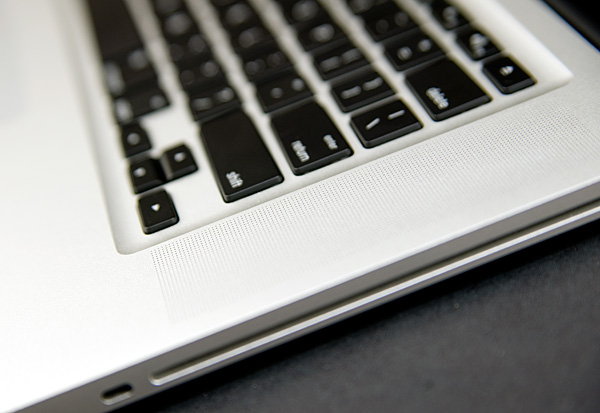Apple's 15-inch Core i5 MacBook Pro: The One to Get?
by Anand Lal Shimpi on April 14, 2010 10:38 PM EST- Posted in
- Mac
- MacBook Pro
- Arrandale
- Core i5
- Laptops
Final Words
Last year's unibody MacBook Pro update didn't do much for performance, but it did wonders for battery life. The huge increase in battery capacity meant Apple's entire pro line of notebooks could be used on cross-country flights or even during a long day of meetings without needing a recharge.
If you needed a Mac laptop at the end of last year, the 2nd gen unibody MacBook Pro was great simply because of its battery life under OS X.
The new Arrandale MacBook Pro delivers the same (or better) battery life compared to last year's model but with anywhere from 0 - 50% better performance. Apple is also offering some nice options including a higher resolution screen for the 15-inch model.

If performance matters to you, this is the MacBook Pro you've been waiting for. While I don't believe owners of the previous generation unibody need to upgrade, if you've got an older notebook this is the one to get.
The new model isn't without its drawbacks however. The most obvious of which being price. At $1799, even the cheapest 15-inch MacBook Pro is very expensive. You're paying for the design, build quality and ultimately the right to use OS X. If those things don't matter to you (particularly the OS X item) then you'd be much better off with an ASUS or Dell. The only consolation here is that the 2.4GHz Core i5 is fast enough if you thought the previous generation was quick. While I'm not sure about the 2.53GHz Core i5, the i7 is definitely worth it if you plan on keeping the machine for a while. I originally stated that I didn't believe the i7 to be worth the upgrade. Since then I managed to get my hands on an i7 system and noted its greater-than-expected performance; my conclusion has been updated to reflect that. The 22% increase in total system cost comes with a 11 - 15% increase in performance in most CPU intensive applications thanks to the extra clock speed and cache. It's a shame that this sort of performance isn't available in the 13-inch model yet, although I suspect it's related to the next point:
With a Core i5 and GeForce GT 330M, the new MacBook Pro can get uncomfortably warm under use. I found that the previous generation unibody ran cooler. Intel expects to see Arrandale power consumption go down sometime after the middle of the year with a future rev of the processor. I'm guessing that's what'll be used in the inevitable Fall update to the new MacBook Pro lineup.
Apple's inclusion of auto switching between the Intel HD Graphics and NVIDIA GeForce GT 330M is nice, however I'd still like the ability to force the GT 330M off entirely when I'd like to keep my lap cooler.
For being as forward looking of a company as it is, Apple continues to drop the ball on making a good SSD standard. Intel's X25-M G2 isn't expensive, what's stopping you Apple?

If you're curious about what's next, I have two words for you: Sandy Bridge. Due out sometime in Q1 2011, Sandy Bridge looks incredible based on early performance data. No word on when we'll see it in notebooks but if you like torturing yourself, waiting for Sandy Bridge will pay off.










114 Comments
View All Comments
MySchizoBuddy - Wednesday, April 14, 2010 - link
sorry i was looking at the 620UM. someone needs more clearer namesAffectionate-Bed-980 - Wednesday, April 14, 2010 - link
seriously? Didn't the 15" get the 9600GT in the two higher level ones?The 9400M was a 13" MBP model and also for the base 15". But clearly the 330M GT is designed to replace the 9600M GT not the 9400M. The 320M GT now in the 13" MBPs is designed to replace the 9400M. The base 15" MBP got an upgrade this year from 9400M to 330M GT, but it's clearly two different classes.
I would've preferred if you benched the 330M GT against the 9600M GT which was an upgrade to the old 8600M GT that I have from an early 2008 MBP. The 9400M is just the wrong card to bench against.
Affectionate-Bed-980 - Wednesday, April 14, 2010 - link
so yes, it's obvious the 330 will be faster than the 9400, but how much faster than the 9600? I think that's the most crucial question.The 320 should've been pitted against the 9400 and 330 against 9600.
Anand Lal Shimpi - Wednesday, April 14, 2010 - link
I agree, I just don't have any of the MBPs with the 9600M around the lab anymore :)Take care,
Anand
Affectionate-Bed-980 - Thursday, April 15, 2010 - link
aww how unfortunate. I just figured that since you put the 2.53 ghz MBP in comparison that it would be the 9600M one. Oh well. I'm glad you at least included my 2008 MBP in the benches (way to make me feel like I need to upgrade :D )Great review
Anand Lal Shimpi - Thursday, April 15, 2010 - link
I always try to have at least n-2 generations of MacBook Pro hardware laying around for comparisons like this :)Take care,
Anand
youguy - Wednesday, April 14, 2010 - link
With SSDs offered as an option, why aren't we seeing TRIM support in Snow Leopard?Griswold - Thursday, April 15, 2010 - link
Ask steve@apple.comShould he respond, it might be something along the line of "We dont believe people want to trim anything". Or that SSDs "are a mess".
Good luck.
ggathagan - Thursday, April 15, 2010 - link
Battery life would be my guess.To a lesser extent, I suppose a 5400rpm drive also generates less heat than a 7200, but I don't know if the difference would be significant.
Brian Klug - Thursday, April 15, 2010 - link
You know, that used to be my thought as well, and I was totally concerned back when the first notebook form factor 7200 RPM drives swung around, but there's no truth to those assumptions anymore. In fact, back then I found that the newer 7kRPM drive actually gave me *better* battery life and reported cooler temps through SMART. Not sure how, but that's just how it worked out. Obviously there are going to be small differences, but there's also that HUGI (hurry up and get idle) consideration to be made here the same way intel rationalizes turbo mode on a notebook; get the task done fast, then go into a low power state. It ends up being a net energy savings.But it's obvious that heat/battery aren't the real reasons; the 7K RPM drives are still options, just not default. $50 isn't that much for a "pro" notebook is my point.
At the same point, a platter drive is a platter drive; the performance gains aren't going to be anywhere near what you'll see with an SSD, so perhaps it makes more sense to just forget about upgrading the HDD and save the $50 for your SSD. There are arguments for both I suppose.
-Brian